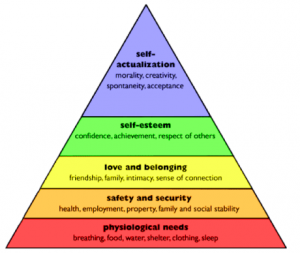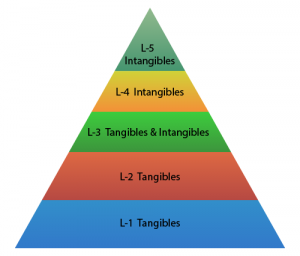Pinpointing the intangibles that your customers value so much that they will pay a premium for them, requires a deep understanding of what your customer values. At times the intangibles may be obvious and, at other times, hard to discern as they are subjective values.
These subjective values are typically driven by the emotional drivers of the buyer or buyers or the organization. What is it they are most keen on gaining or avoiding? Typically, these subjective values also align with loyalty when they are a customer.
Your experiences with customers when difficulties or challenges arise, may at times be the greatest clue as to the intangibles that your clients value.
One of our customers gained insight into the intangibles their customers valued years ago, albeit not in the way we want to discover them.
Our client, a manufacturer of a consumable product, was recognized by the parent company for their exceptional customer service. Despite their exceptional customer service, the parent company recognized the opportunity to leverage the volume being purchased by each of their divisions.
Ultimately the parent company chose a larger supplier with better buying power who could provide the largest volume discounts. Once the selection of the new supplier was completed, the parent company instructed the sister companies to change suppliers.
What followed was interesting. Some of the divisions followed suit and moved their business to the new supplier and some did not. The parent company insisted that all the divisions purchase from the new supplier. Many of the sister companies continued to resist the move. Many of them never moved.
Clearly, the divisions that refused to move their business valued something more than the tangibles and the price.
 In the Harvard Business Review article The B2B Elements of Value (March-April 2018) the authors use a pyramid that is conceptually like Maslow’s Hierarchy of Needs, starting from the very basic to the complex. There are 5 levels to the model. The first 2 levels are tangibles, level 3 combines tangibles and intangibles and levels 4 and 5 are intangibles.
In the Harvard Business Review article The B2B Elements of Value (March-April 2018) the authors use a pyramid that is conceptually like Maslow’s Hierarchy of Needs, starting from the very basic to the complex. There are 5 levels to the model. The first 2 levels are tangibles, level 3 combines tangibles and intangibles and levels 4 and 5 are intangibles.
 In our client’s case, it was the intangibles that created differentiation. The customers placed a high value on the intangibles in Level 3. In fact, all three of these intangibles were of high value to the sister companies. One key intangible from Level 3 was the relationship with the sales representative who they could count on literally like clockwork.
In our client’s case, it was the intangibles that created differentiation. The customers placed a high value on the intangibles in Level 3. In fact, all three of these intangibles were of high value to the sister companies. One key intangible from Level 3 was the relationship with the sales representative who they could count on literally like clockwork.
From Level 4, the key intangibles that created leverage were Reputational Assurance and Reduced Anxiety. Simply put, the sister companies knew that they could count on the supplier and, therefore, their lines would never be down which would have caused major pressure with their clients.
So, what are the intangibles that your customers value?
If you want to read the full article – https://hbr.org/2018/03/the-b2b-elements-of-value

